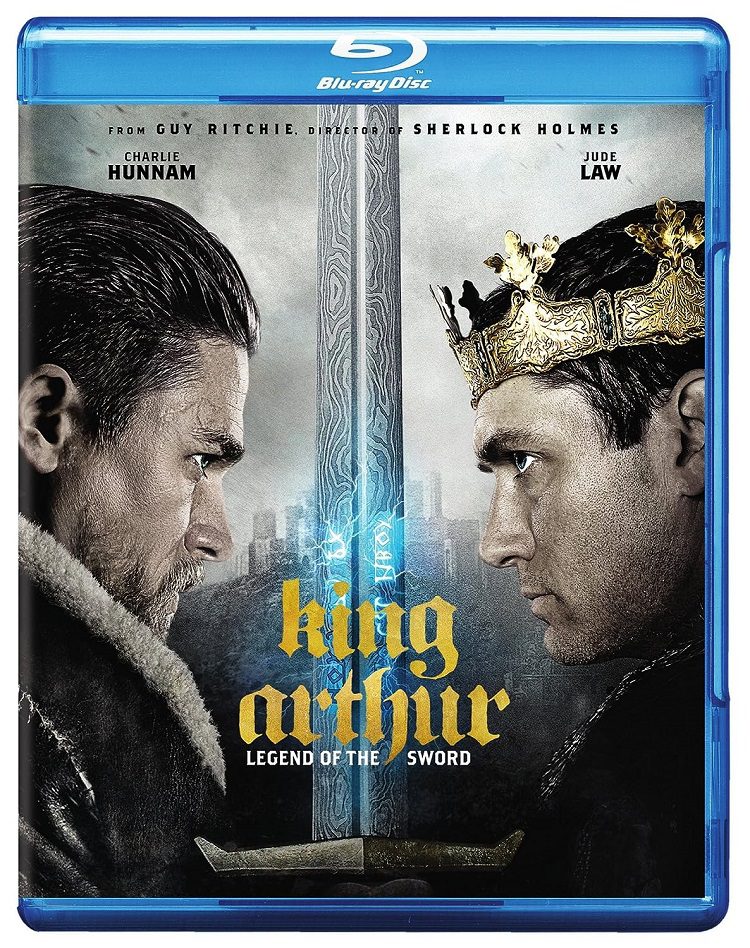
The one question I had after the screening of Guy Ritchie’s King Arthur: Legend of the Sword was, “Why does this exist?” I’m still trying to find an answer for it. Granted, this is a different take on the King Arthur story that we’ve all known to grow and love. And by different, I mean, there are gigantic elephants getting ready to destroy Camelot in the opening sequence. Not only that, but there are strange, octopus mermaids led by one that looks like a cross between The Little Mermaid‘s Ursula and Here Comes Honey Boo Boo‘s Mama June.
But my questioning of its existence is because, even though the movie has some spurts of enjoyably crazy ideas sprinkled throughout its 126-minute runtime, Ritchie and crew don’t make any attempts to hold onto the viewer’s attention span for a long time. Everything in this new King Arthur is big, loud, messy, and downright strange. That’s not to say it’s truly bad; there are some glimmers of hope. The CG, though overused, works in some instances and doesn’t work in others. As a whole, the movie is a hot mess, and when the credits appear onscreen, you’re left questioning why there needed to be another movie about King Arthur.
The last time we saw King Arthur was not that long ago. Back in 2004, Antoine Fuqua directed one with Clive Owen and Keira Knightley that attempted to be more grounded than previous entries, but ended up being forgettable. Ritchie’s new version doesn’t take all of the characters you know and love and throw them into a new story. Guinevere and Lancelot are absent, although Astrid Bergès-Frisbey is credited on Wikipedia and Rotten Tomatoes as playing the former. It’s hard to tell, since she is never called by her name. She’s just someone that talks to Arthur (Charlie Hunnam), and we’re supposed to care about her character, but we don’t, because Ritchie and crew don’t spend any time developing her or anyone else involved. And Frisbey, in her second American role, looks and acts confused with how she’s supposed to portray the character.
Ritchie’s King Arthur takes place before the titular character became known as such. When he was just a young lad, he witnessed his father, Uther (Eric Bana), get murdered by his uncle, Vortigern (Jude Law), who then seizes power as the new king of Camelot – robbing Arthur of his birthright. Years pass, and the apathetic Arthur, now a street rat of the town, makes an attempt to pull the sword known as Excalibur from the stone after the other town citizens try and fail. Arthur succeeds, and he now must learn and respect the sword’s power and accept his destiny.
No matter how underdeveloped the characters are, Hunnam is able to show some signs that he can be a great leading man in movies. And while his character isn’t given much emotional range, he does carry the right amount of machismo to pull off the role in a better film. The same can be said about Law. He’s not a fully developed villain, but when he’s on screen, his scenery-chewing performance makes for an entertaining time, no matter how brief it is.
Ritchie’s heavy metal approach to King Arthur makes its action scenes feel like extended trailers that were spliced together in between the long-winded moments of exposition. Save for Daniel Pemberton’s heavy-hitting, industrial metal score that overpowers many of the scenes, there’s never a moment of excitement in them, only a moment of anticipation. We keep anticipating that we’re going to watch something grand and gritty and thrilling, when we forget that we’re actually watching what is supposed to be the movie and not a bunch of previews. Even Arthur’s upbringing montage is cut in a way to make it feel like a trailer.
Whenever Arthur has his hands on Excalibur, he’s given a sort of superhuman strength in which he can destroy all villains without breaking a sweat. And in some cases, the action scenes don’t feel like we’re watching a trailer anymore. Instead, we’re now watching a video game. Ritchie and his longtime editor, James Herbert, hand the viewer a controller and tell them to play, except the one thing they forgot to mention is that the controller is unplugged, and you’re just watching some previous game play sequences. It becomes tiresome really quickly.
A lot of these scenes are slowed down and zoomed in on characters that get slashed with the sword, and debris and body parts fly everywhere. It’s the same style of editing that came from movies like 300, even though this is toned down to a PG-13 unlike Zack Snyder’s movie. While 300 was dopey in its own way, it at least has a nice visual flair that this new King Arthur lacks. One could look at thisand also say it’s as if Ritchie wants to give us a new take on the King Arthur story, when, at the same time, he’s hoping to get attached to a reboot of the He-Man franchise as well, and this is his demo reel. There are some moments that feel like Arthur could shout out “I have the power!” as soon as he has Excalibur in his grip.
King Arthur: Legend of the Sword is the first in a proposed six-film series revolving around the titular character. Yes, six films. Talk about overconfidence. What happened to the days when a studio would release a new film and, if it did well, they would come up with a plan for a second film after that? That’s actually the more realistic approach Warner Bros. should have taken to a character that’s been absent from the silver screen for more than a decade.